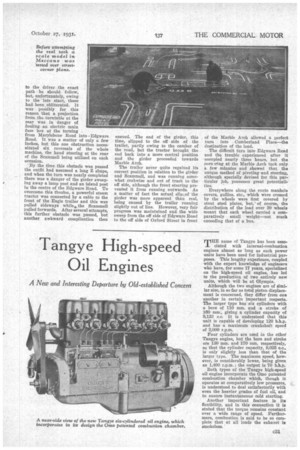Tangye High-speed Oil Engines
Page 81

If you've noticed an error in this article please click here to report it so we can fix it.
A New and Interesting Departure by Old-established Concern
MEE name of Tangye has been asso ciated with internal-combustion engines almost as long as such power units have been used for industrial purposes. This lengthy experience, coupled with the expert knowledge of engineers who have, for some 17 years, specialized on the high-speed oil engine, has led to the production of two entirely new units, which will be at Olympia.
Although the two engines are of dimilar size, in so far as total piston displacement is concerned, they differ from one another in certain important respects. The larger type has six cylinders with a bore' of 110 mm. and a stroke of 160 mm., giving a cylinder capacity of 9,123 c.c. It is understood that this unit is capable of developing 120 b.h.p. and has a maximum crankshaft speed of 2,000 r.p.m.
Four cylinders are used in the other Tangye engine, but the bore and stroke are 130 mm. and 170 tom. respectively, so that the cylinder capacity, 9,025 c.c., is only slightly less than that of the larger type. The maximum speed, however, is considerably lower, being given as 1,400 r.p.m.; the output is 70 b.h.p.
Both types of the Tangye high-speed oil engine incorporate the Omo patented combustion chamber which, though it operates at comparatively low pressures, is understood to deal satisfactorily with even the heavier grades of fuel oil, and to ensure instantaneous cold starting.
Another important feature is its flexibility, and in this connection it is stated that the torque remains constant over a wide range of speed. Furthermore, combustion is said to be so complete that at all loads the exhaust is smokeless.




































































































































































